The oil pressure gauge is one of the most important instruments in a car. It acts as an indicator of the engine’s overall well-being and as an early-warning system,
Giving advance notice of any problems so you can investigate the cause,
Before an expensive breakdown occurs.
How oil pressure gauges work
The gauge monitors the oil pressure in one of the main oilways;
Near to the pump and filter. To do this it has a tapping in the engine block,
Into which is screwed a sensor (for electric gauges) or an oil pipe take-off (for mechanical gauges).
The sensor for the oil warning light is screwed into the union or T-piece at this point,
Whether or not the car is fitted with an oil pressure gauge.
Mechanical gauges work by literally forcing the needle,
Around the dial under pressure from the engine. Electric gauges, on the other hand,
Work by using the sensor screwed into the engine block to produce a variable resistance
That affects the amount of current passing through the circuit,
Containing the gauge and sensor.
Electric gauges
Electric oil pressure gauges
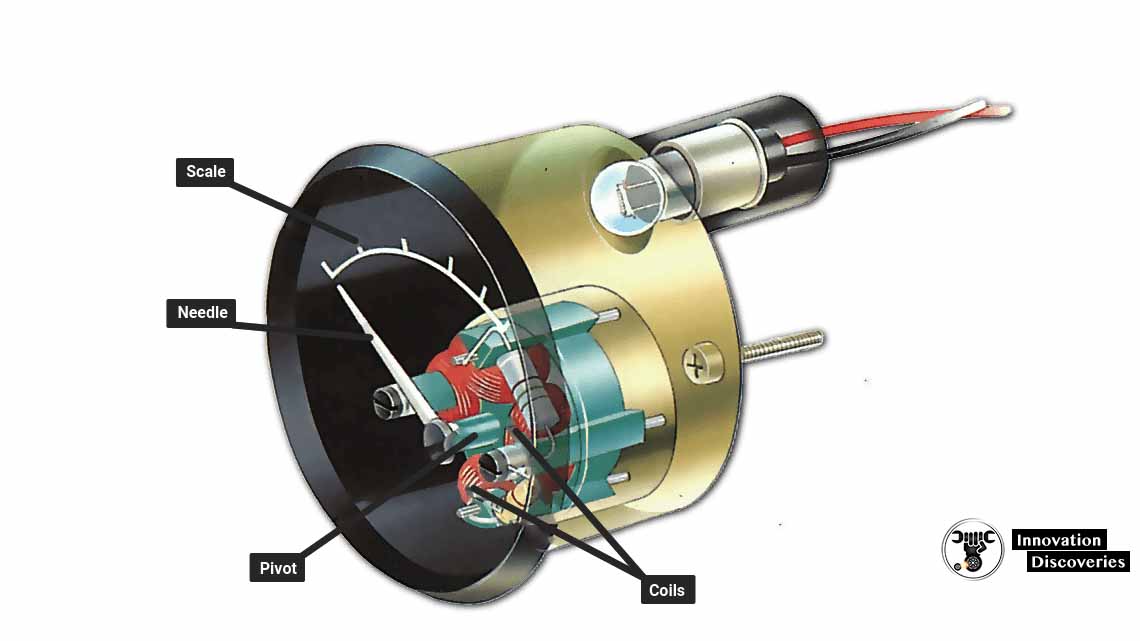
Which runs through the gauge and back to earth through a sensor unit.
The reading given by the gauge depends on the resistance of the sensor unit;
This, in turn, is determined by the engine’s oil pressure.
Electric gauges have the advantage of being easy to integrate
Into a modern dash design.
Electric current is supplied to the gauge from a fused power supply in practice the
The current is taken from one of the many wires or printed tracks behind the dashboard.
The current passes through a wire-wound coil mounted around or
Within the needle’s pivot and produces a magnetic field that moves
The needle across the calibrated scale of the gauge.
How far across the scale the needle goes what reading it gives depends on
How much current flows through the gauge. This, in turn, depends on the resistance of
The gauge’s return wire is earthed to the engine block through the sensor.
All gauges are illuminated so that they can be read at night. Integral gauges are lit from
One of the panel lights which also illuminate the rest of the instruments,
While separate gauges have a small (0.5 to 3 watt ) bulb mounted in a holder at their rear. All these lights are usually connected to the side/panel light circuit.
Electric sensor units
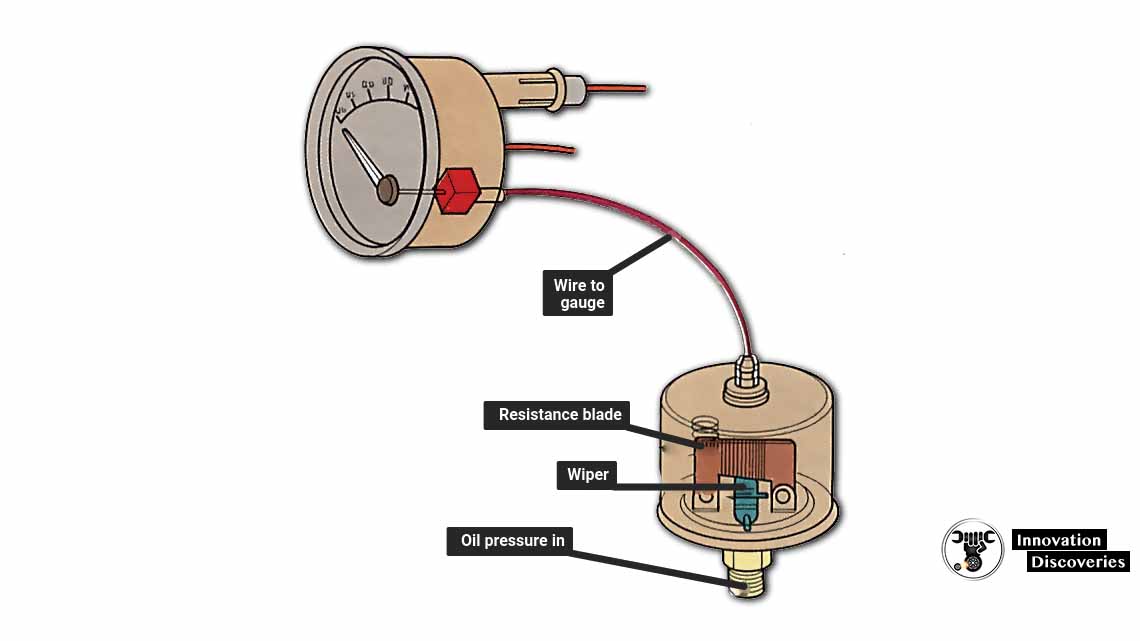
Curved blade of known resistance.
The wiper is moved by a diaphragm that keeps the sender oil-tight.
Mechanical gauges
Oil is sent to the gauge from the tapping in the engine’s
Oilway by a small-bore (3mm) pipe,
Usually copper or plastic. The pipe is routed away from anything that could damage it,
Because the pipe is punctured the engine’s oil would leak out.
The pipe enters the passenger compartment via a grommeted hole in the bulkhead,
And joins the stub on the back of the gauge via a knurled connector.
The gauge contains a flexible coiled tube called a bulb,
The open end of which is rigidly mounted to the gauge’s outer casing.
The other end of the bulb is closed and connected
By a lightweight linkage to the bottom end of the needle,
Which is itself mounted on a pivot?
Oil is fed into the bulb from the supply pipe at very nearly the same pressure;
As it left the engine. The bulb tries to straighten under the pressure and in doing so moves the
Needle around the calibrated gauge scale. The greater the pressure, the more the needle moves.
Mechanical oil gauge
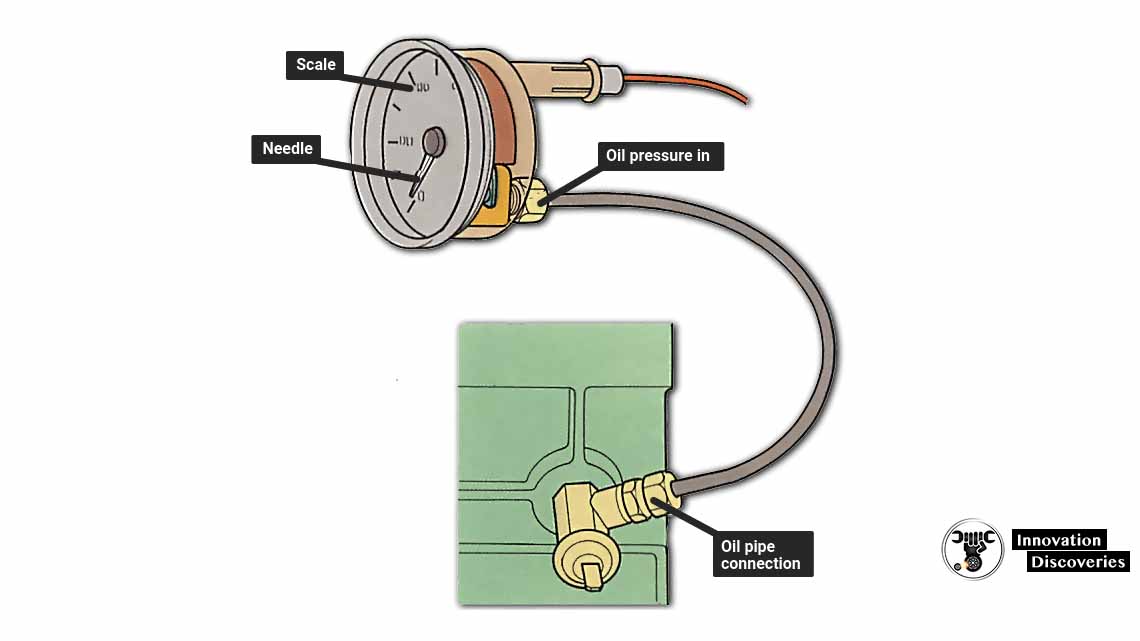
Several sensors to be connected to one tapping copper washers seal joints.
Reading an oil pressure gauge
Zero readings with the engine running above idling speed mean
That either the gauge is faulty,
The oil level is much too low or the oil pump or its drive has broken.
If this happens, you should switch off the engine immediately.
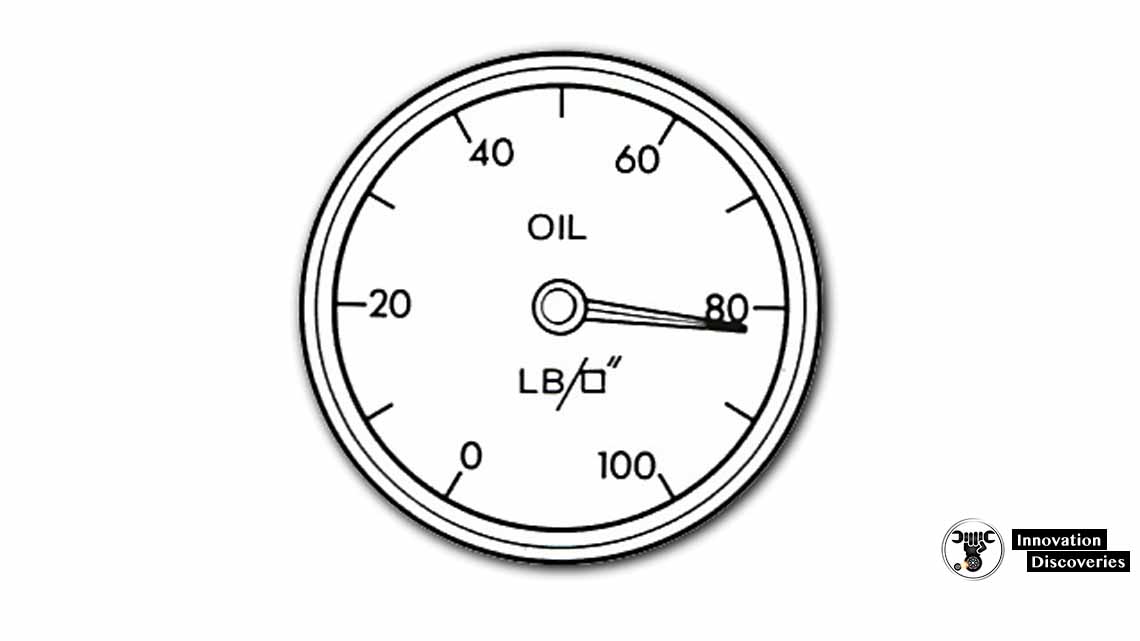
Extremely high readings after a cold start mean the pressure relief valve
Near the pump and filter have probably stuck. The engine should be switched off or the oil filter could burst.
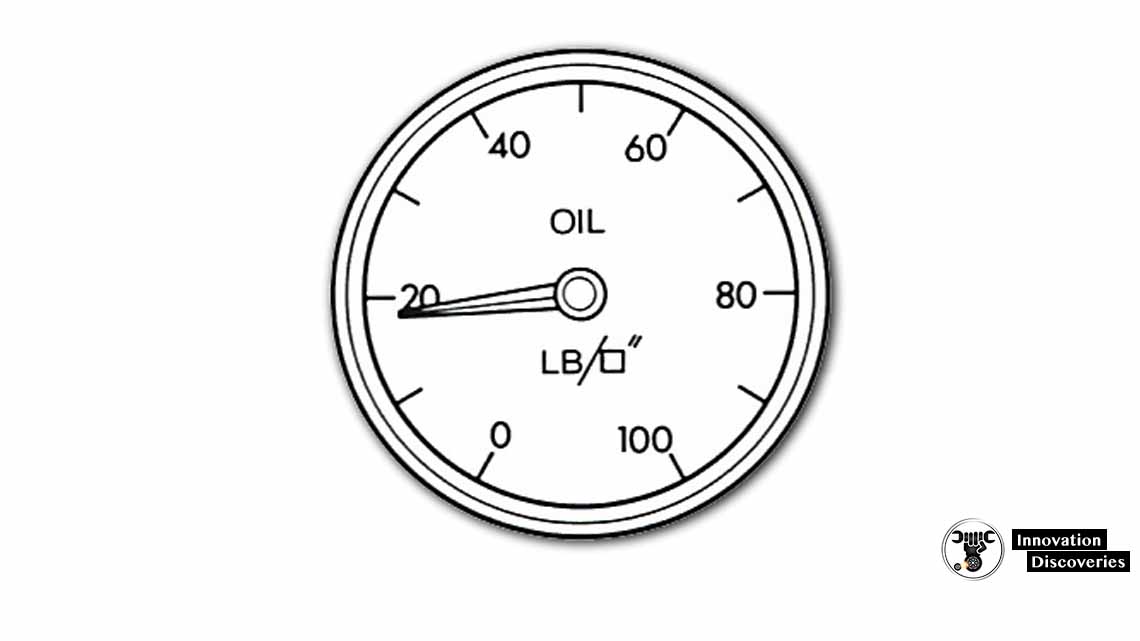
Consistently low readings, compared with the one in the car handbook,
Could indicate a fault in the gauge itself or the instrument panel,
But it is more likely that the main engine components are becoming worn. Don’t worry if the reading drops by only 5psi or so during a long run in hot weather.
Pros and cons
Electric gauges are easier to integrate into the modern one-piece printed circuit
Instrument panels used in most modern cars,
They are less bulky and it’s easier to route and connect a wire than a pipe.
Mechanical gauges are not as common as electric ones,
Although they are still available in accessory shops.
Because the oil arriving at the back of the gauge is at engine pressure,
You have the problem of messy leaks if the pipe comes undone.
However, some people find a mechanical gauge more trustworthy.
Oil warning lights
Many cars do not have an oil pressure gauge fitted as standard,
But because some indication of low oil pressure (especially zero reading) is so important,
They will at least have a red or orange warning light;
That shines if the oil pressure drops below a certain level.
Often this warning light will be connected to an oil-level sensor as well,
And in some cars, the light doubles as an engine temperature warning light.



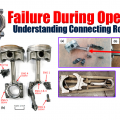
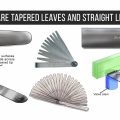
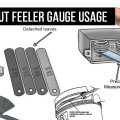
2 Comments